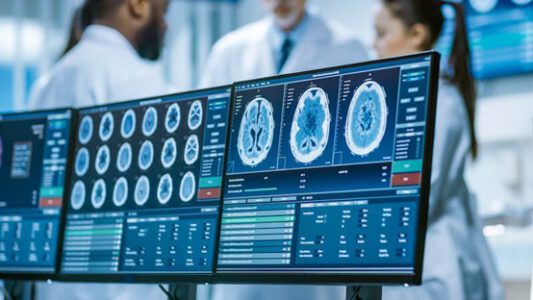In order to provide medical care, it is important to understand what is happening inside a patient’s body. The latest generation of vision systems is allowing doctors to create accurate imaging. This is providing a new understanding of the human body and is enabling a whole new approach to surgery and medical care.
One of the key reasons that imaging is so important in successful diagnosis and treatment is that every patient is different. Each patient has a unique anatomy, and each will present symptoms in a different way. Despite the years of experience that doctors build up through the course of their careers, they cannot make assumptions and must be aware of the subtlety required when caring for patients. Creating an accurate image of the patient and their condition is vital to providing the ideal treatment.
For many years, X-ray technology offered the only real alternative to surgery in order to diagnose conditions. Exploratory surgery – the conducting of surgery to understand and diagnose a patient’s illness – increases the risk of secondary infection, and doctors have always looked for new methods that remove the need for invasive procedures.
Advanced Vision Systems
Modern imaging has come a long way since the early, crude experiments with X-rays. There are several technologies that allow doctors to form an image of the body without invasive procedures, including several that are familiar to the public – ultrasound, magnetic resonance imaging (MRI) and radiography. These are supplemented by other techniques that create visual representations via the use of cameras and even fibre optics.
Imaging is not just used for diagnosis. The use of robots in the medical field is growing quickly. The ability of robots to work quickly and with great precision makes them a powerful tool in the medical field. Healthcare professionals are constantly developing new techniques to provide the best possible care for patients with improved clinical outcomes and reduced hospital stays. The first robots used in the medical world were designed to facilitate minimally invasive treatments by providing improved visualization and precision for surgeons.
This is where imagery is so important, as robots do not replace the experience and skill of the surgeon. Rather, they act as an extension of the surgeon’s hands, allowing them to treat patients while keeping damage to healthy tissue to a minimum. This precision reduces both patient discomfort and the time needed for recovery.
These robotic hands are guided by the latest 3D cameras as the surgeon operating the robot needs to be able to see and act immediately, without delay. To achieve this, the robot needs to provide great visualization and speed and, in conjunction with the latest high-speed communications, can even allow surgeons to operate from a different location.
Imaging and Treatment
The line between imaging and treatment is starting to blur. One of the most interesting aspects of this latest generation of medical equipment is the use of optical technology. Fiber has long been used in the telecommunications industry due to its ability to carry large amounts of data over long distances. In the medical environment, fiber is being used in different ways. Its small diameter is ideal for employment in minimally invasive surgery, and its unique properties allow it to be used to provide surgeons with high resolution, real-time visualization. In addition, new sources of energy are being used to deliver treatment to highly localized areas without damaging the surrounding tissue. One of these new techniques is laser therapy, which can be applied with remarkable precision using optical fiber.
Medical imaging systems have evolved a long way from the early X-ray machines. Not only is imaging providing new ways to provide diagnoses, but it can also provide crucial assistance in the treatment of a huge range of conditions. Samtec products are at the forefront of the latest imaging systems, from conventional RF connectors in vision devices to non-magnetic solutions for MRI applications and active optical systems to provide the highest possible data speeds.
Samtec’s rigorous Extended Life Product and Severe Environment Testing programs provide designers with the confidence that they need when creating medical products that are suitable for this new generation of imaging systems. For full details of these programs, and to see how Samtec products are supporting the latest innovations in the medical industry, visit the new Medical Applications page on Samtec.com.
Cover Image: The latest medical vision technology









